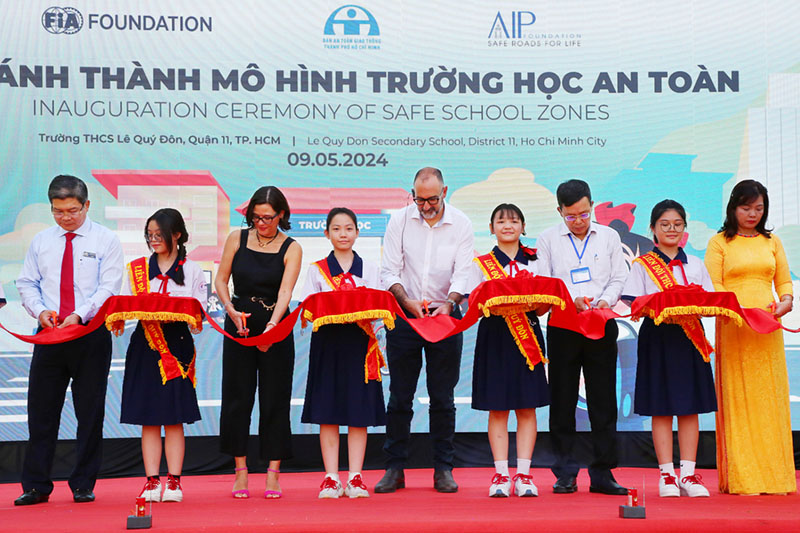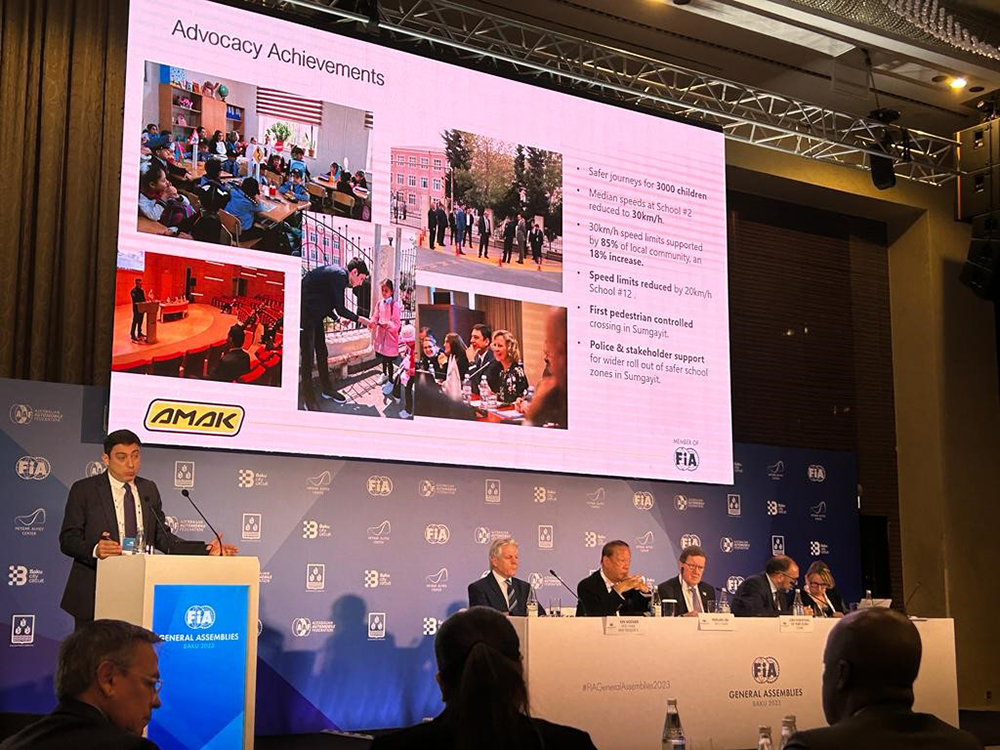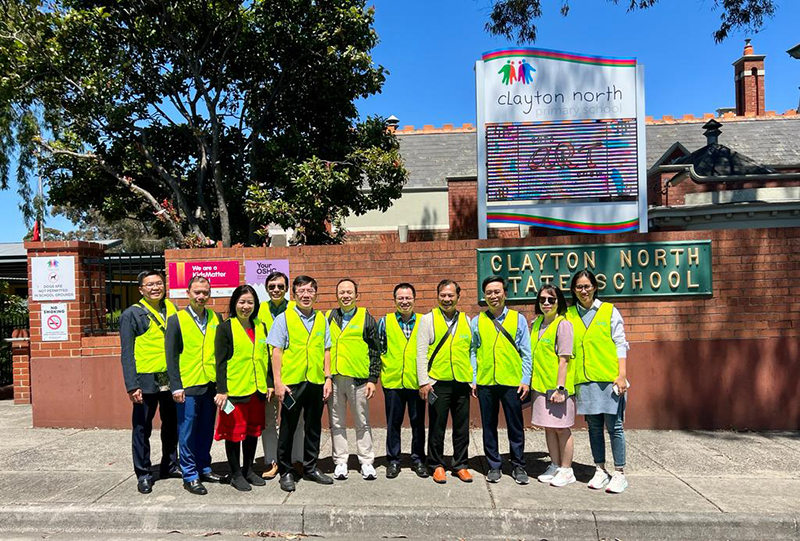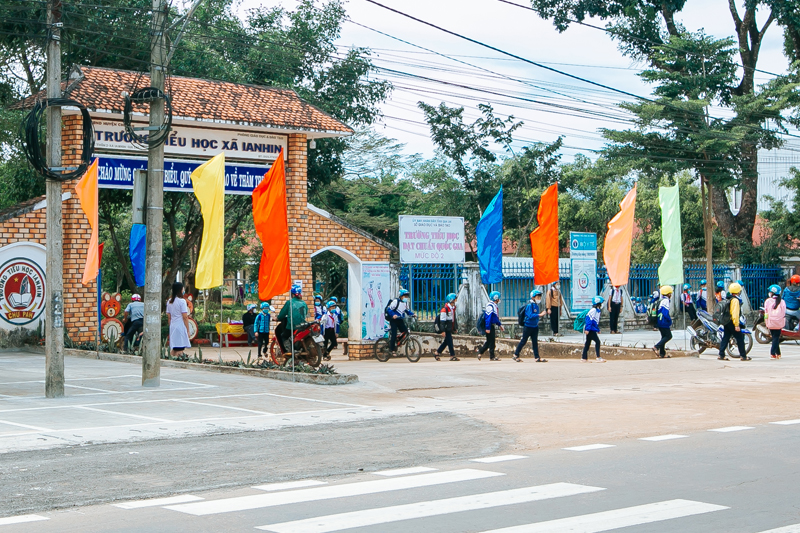High-level support for safe school zones in Armenia
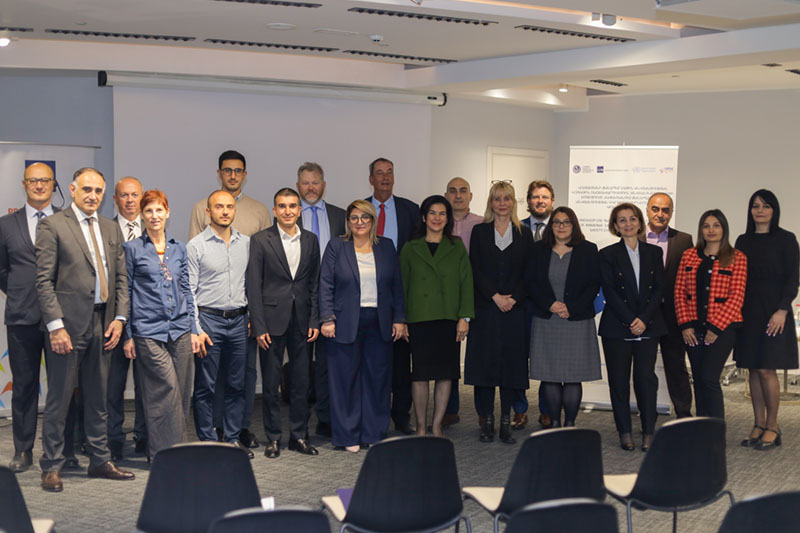
EASST’s local partner the National Road Safety Council NGO (NRSC), organised Armenia’s first-ever multi-stakeholder dialogue on road safety and low-speed school zones, with support from the FIA Foundation.
The event, attended by EASST and the FIA Foundation along with other international partners, included a high-level political forum in which representatives of the Armenian Government were present to discuss the increasing number of road crashes and casualties in the country and how the upcoming National Road Safety Strategy will address this issue. In 2022, 31 children died and over 800 were injured in road crashes in Armenia.
The meeting focused on the need to implement the Safe System Approach in Armenia along with evidence-based solutions such as the implementation of 30km/h speed limits around school zones, hospitals, and other areas where vulnerable road users and traffic mix.
Across the EASST region, work on building Safer Schools Zones has shown that reduced speed limits and traffic-calming infrastructure really can yield results. For example, road safety upgrades that EASST supported around three school zones in Bishkek, Kyrgyzstan have seen a 50% reduction in the number of road casualties since upgrades were installed in 2022, with over 75% of teachers and parents surveyed reporting a perceived reduction in vehicle speeds.
The meeting concluded with government representatives, led by the Deputy Minister for Infrastructure and Territorial Administration, signing an official Memorandum of Intention – which committed them to supporting the implementation of the National Road Safety Strategy and its goals in line with recommendations set out in the Global Plan for UN Decade of Action for Road Safety.
Poghos Shahinyan, Director of the National Road Safety Council NGO, said: "School zones are not just marked by boundaries but by a shared commitment to road safety. In the deceleration of speed, we forge a shield around education, embracing a strategy where every reduced km/h becomes a promise to safeguard the dreams of our future leaders."
In addition to the political forum, NRSC organised a one-day technical workshop on the implementation of the Safe System Approach around School Zones, with support from the Asian Development Bank. EASST presented on its work across the region, emphasising the need for 30km/h speed limits and well-marked and maintained ‘School Zone’ infrastructure – sharing the EASST ‘Assessing and Reporting on Road Safety in School Zones’ as well as other resources. The workshop was attended by representatives from local authorities across Armenia and aimed at building the capacity of local implementers so that they are prepared to effectively implement the National Road Safety Strategy when it is passed.
Rita Cuypers, FIA Foundation Director of Partnerships said “We are proud to support Armenia’s National Road Safety Council under our Child Health Initiative Advocacy Hub’s Persuader portfolio that aims for policy change to keep children safe on their daily school journeys through traffic calming and speed reduction. It requires collective efforts of all stakeholders involved to achieve this, as well as preparation which was facilitated by this timely high-level road safety forum and safe school zones capacity building”.
Since August, there has been at least three meetings of the Cabinet of Armenia, chaired by the Deputy Prime Minister, with all Ministers agreeing the importance of reduced speeds around schools. It is widely hoped that the National Road Safety Strategy will be formally approved soon.
The importance of safe school zone implementations shown by NRSC will be further strengthened by the Armenian Automobile Federation (AAF) undertaking a school zone safety project through the FIA Road Safety Grants Programme, funded by the FIA Foundation. This will involve carrying out school zone assessments using iRAP’s Star Rating for Schools methodology. The results of the assessments will support recommendations for infrastructure upgrades to improve road safety around selected schools.



